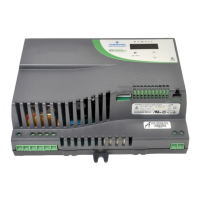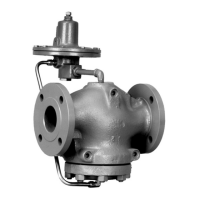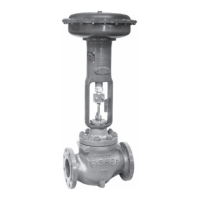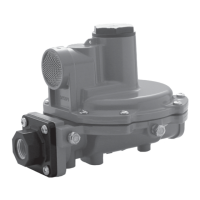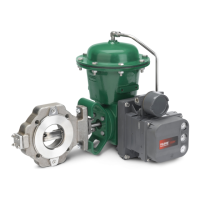FloBoss 107 Instruction Manual
1-18 General Information Revised June-2017
can configure security protection on COM1, COM2, and COM3, but this
security is disabled by default.
1.4.5 I/O Database
The I/O database contains the I/O points the operating system firmware
supports, including the system analog inputs and variables, Multi-
Variable Sensor (MVS) values, communications, and smart application
modules. The firmware automatically determines the point type and point
number location of each installed module. It then assigns each input and
output to a point in the database and includes user-defined configuration
parameters for assigning values, statuses, or identifiers. The firmware
scans each input, placing the values into the respective database point.
These values are available for display and historical archiving.
1.4.6 Function Sequence Tables (FST)
The FB107 supports FST user programmability. You can develop four
FST programs with a maximum length of 3000 bytes each. You configure
the number of FST lines per execution cycle in ROCLINK 800.
The FST code resides in static RAM and is backed up to flash memory
when you issue the Save Configuration function through ROCLINK 800.
Note: You must first enable FSTs (Configure > Control > FST
Registers) in order to make them available.
1.4.7 PID Control
The PID Control applications firmware provides Proportional, Integral,
and Derivative (PID) closed-loop control for a FB107, which enables the
stable operation of a feedback control loop that employs a regulating
device, such as a control valve. The FB107 supports eight PID control
loops and requires an optional CPU I/O assembly or I/O module.
The firmware sets up an independent PID algorithm (loop) in the FB107.
The PID loop has its own user-defined input, output, and override
capability.
A PID control loop maintains a process variable at setpoint. If PID
override control is configured, the primary loop is normally in control of
the regulating device. When the change in output (user-selectable) for the
primary loop becomes lesser or greater than the change in output
calculated for the secondary (override) loop, the override loop takes
control of the regulating device. A typical example is for flow control
with a pressure override loop.
Note: You must first enable PID control loops (ROC > Information) in
order to make them available for use.

